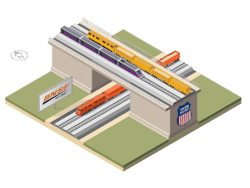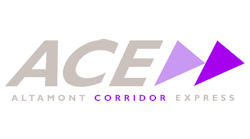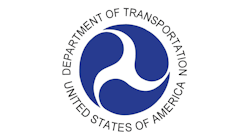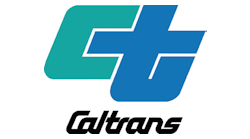The Stockton Diamond project lands $20-million BUILD grant
The San Joaquin Regional Rail Commission (SJRRC) and the California Department of Transportation (Caltrans) have been awarded a $20 million Better Utilizing Investments to Leverage Development (BUILD) grant by the U.S. Department of Transportation for the Stockton Diamond Grade Separation Project.
“This project is a critical step in unlocking freight and passenger rail mobility in Northern California. The Stockton Diamond Grade Separation will fix one of the most congested rail corridors, enhance safety, reduce emissions and provide faster, more reliable passenger rail options for our riders,” said Kevin Sheridan, SJRRC director of capital projects and the Stockton Diamond Grade Separation Project manager.
The diamond is described as the busiest and most congested rail junction in the state of California. The $237-million project will separate the at-grade crossing of tracks owned by Union Pacific and BNSF Railway and used by Amtrak San Joaquins and Altamont Corridor Express (ACE) trains. Project partners say the construction of a grade separation at this at-grade crossing will make this rail infrastructure more efficient and predictable for both current and future use.
“Untangling the diamond will provide immediate benefits to residents of Stockton, support our plans to expand both the ACE commuter rail service and San Joaquins intercity passenger rail service, and improve freight movements throughout the region. We are extremely proud that this was the only rail project in the nation to win a BUILD award,” said Christina Fugazi, chair of the San Joaquin Regional Rail Commission.
The project adds to the more than $67 million in BUILD grants to have been awarded to rail and transit projects for this round of funding.
In a letter of support to U.S. Department of Transportation Secretary Elaine Chao in support of the project’s BUILD grant application, U.S. Rep. Jerry McNerney (D-CA-9) wrote the project would improve freight rail safety, increase efficiency of freight and passenger rail movement, improve access from the Port of Stockton to markets nationally and globally and facilitate economic growth in the greater-Central Valley and Bay areas.
“The Commission’s Stockton Diamond Grade Separation project will make goods and passenger movement more efficient along the West Coast, and the San Joaquin Valley a more attractive place to do business. It will also have a positive effect on Stockton’s air quality by eliminating the need for locomotives to idle as they wait for crossing train,” said U.S. Rep. McNerney in a release on the BUILD grant award.
In addition to the rail grade separation, the project includes bike, pedestrian and roadway improvements at 10 at-grade local road crossings in the city of Stockton, which would increase public safety for local residents.
The project is not only needed to unsnarl a chokepoint, but it serves as a critical element in SJRRC’s vision to expand intercity and commuter rail service between the San Joaquin Valley, Sacramento and the Bay Area. SJRRC is currently in the planning and environmental phase of its nearly $1 billion “Valley Rail” service expansion program for both ACE and Amtrak San Joaquins.
The Valley Rail Program will implement two new daily round trips for the Amtrak San Joaquins service and extend ACE service between Sacramento and Merced. It also supports converting the San Joaquins train and thruway bus network to renewable diesel fuel and is a key component to improving air quality in the region.
“This critical project will improve both passenger and freight rail while pushing economic growth in the San Joaquin Valley,” said Caltrans Director Toks Omishakin. “The project will help reduce delays, improve air quality and expand access to the Port of Stockton.”
On Aug. 19, 2020, the SJRRC launched the Environmental Review process for the project, in cooperation with the Federal Railroad Administration and the California High Speed Rail Authority. A Draft Environmental Document is expected in early winter 2021, with construction estimated to begin in spring 2023.

Mischa Wanek-Libman | Group Editorial Director
Mischa Wanek-Libman is director of communications with Transdev North America. She has more than 20 years of experience working in the transportation industry covering construction projects, engineering challenges, transit and rail operations and best practices.
Wanek-Libman has held top editorial positions at freight rail and public transportation business-to-business publications including as editor-in-chief and editorial director of Mass Transit from 2018-2024. She has been recognized for editorial excellence through her individual work, as well as for collaborative content.
She is an active member of the American Public Transportation Association's Marketing and Communications Committee and served 14 years as a Board Observer on the National Railroad Construction and Maintenance Association (NRC) Board of Directors.
She is a graduate of Drake University in Des Moines, Iowa, where she earned a Bachelor of Arts degree in Journalism and Mass Communication.






